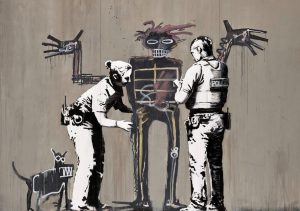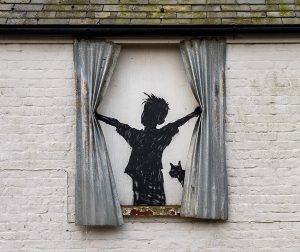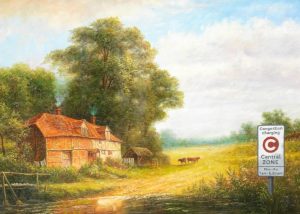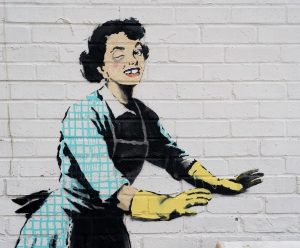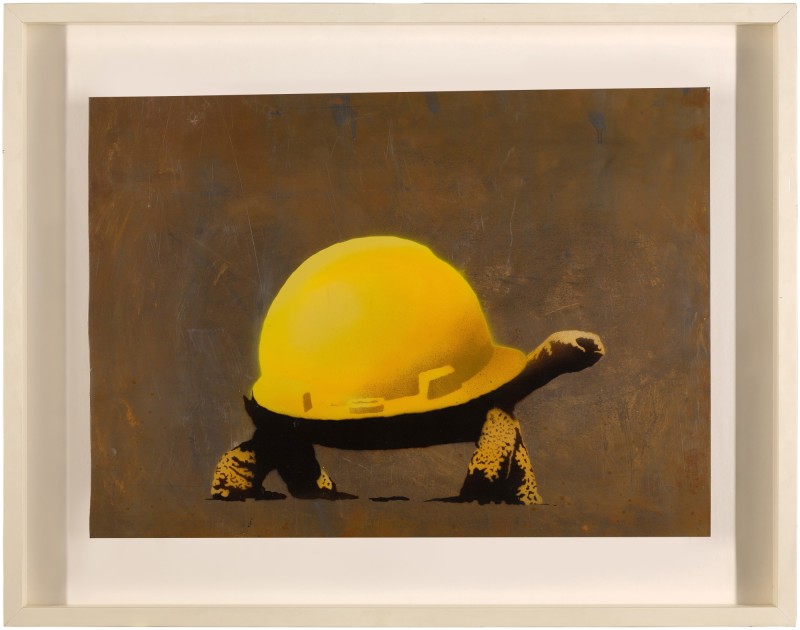
Tortoise Helmet, 2009
Spray-paint on found steel
53 x 74.5 cm (20 ⅞ x 29 ⅜ inches)
Unique, Signed
Sotheby’s London: 1 July 2021
Executed in 2009, Untitled (Tortoise Helmet) depicts a stoic stenciled tortoise on found material, replete with an industrial yellow hard hat in place of its shell. Around the world the tortoise is a symbol of wisdom and knowledge; an animal that can defend itself through the use of its mobile home. Like much of Banksy’s work, the image is an ambiguous one, recoiling from obvious interpretation. Perhaps a commentary on homelessness or the mass housing crisis in the United Kingdom following the financial crash of 2007, the present work is an enigma to be unraveled and deconstructed by the viewer, a thought-provoking moment of reflection in which to critically analyze our current socio-economic landscape.
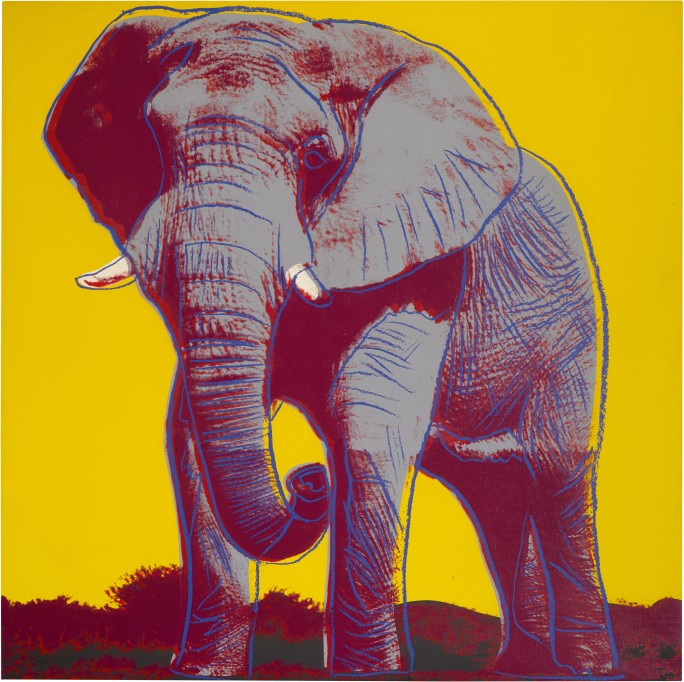
ANDY WARHOL, AFRICAN ELEPHANT, 1983
ARTWORK: © 2021 THE ANDY WARHOL FOUNDATION FOR THE VISUAL ARTS, INC.
ARTWORK: © 2021 THE ANDY WARHOL FOUNDATION FOR THE VISUAL ARTS, INC.
Banksy’s art can be seen to fit into a rich and venerable history of political parody. From the British pictorial satirists of the Eighteenth Century, including Thomas Rowlandson, James Gillray and, of course, the great William Hogarth, through to the allegorical writings of George Orwell whose revolutionary novel Animal Farm similarly utilized zoological symbolism to critique modern society, and on to the political cartoonists of the present day, Banksy’s finest work is situated within an esteemed tradition of raising an unforgiving and illuminating mirror up to the world.
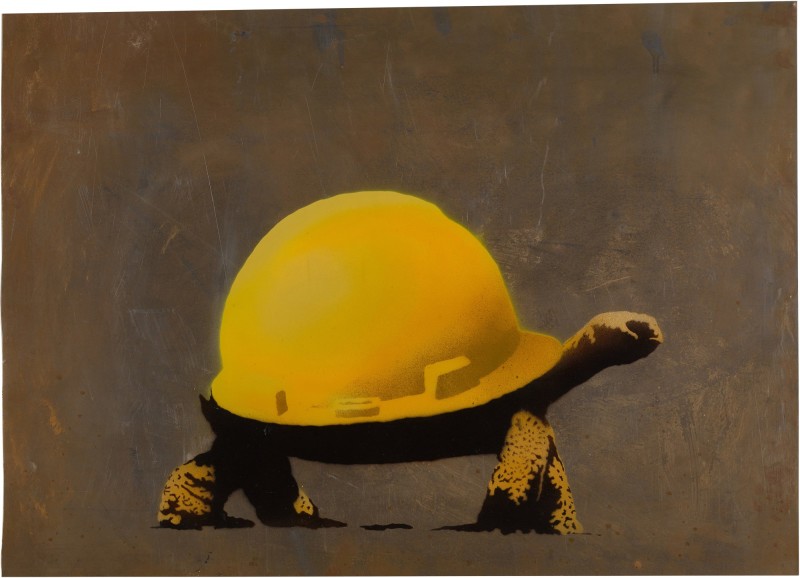
Born and bred in Bristol, Banksy has achieved a now legendary status that teeters between acclaim and notoriety for his distinctive style of satirical street art and graffiti. His work is rich in dark humor and frequently captioned with subversive epigrams that provide pejorative commentaries on socio-political aspects of contemporary life. Seeking to disturb and disrupt the status-quo through his interrogative and anti-establishmentarian practice, Banksy has epitomized his own mission with the adage: ‘Art should comfort the disturbed and disturb the comfortable’ – a modern day take on the turn-of-the-century American satirist Finley Peter Dunne’s declaration that the duty of a newspaper is to “comfort the afflicted and afflict the comfortable” (Finley Peter Dunne cited in: Dean P. Turnbloom, Ed., Prizewinning Political Cartoons: 2010 Edition, Gretna 2010, p. 146).
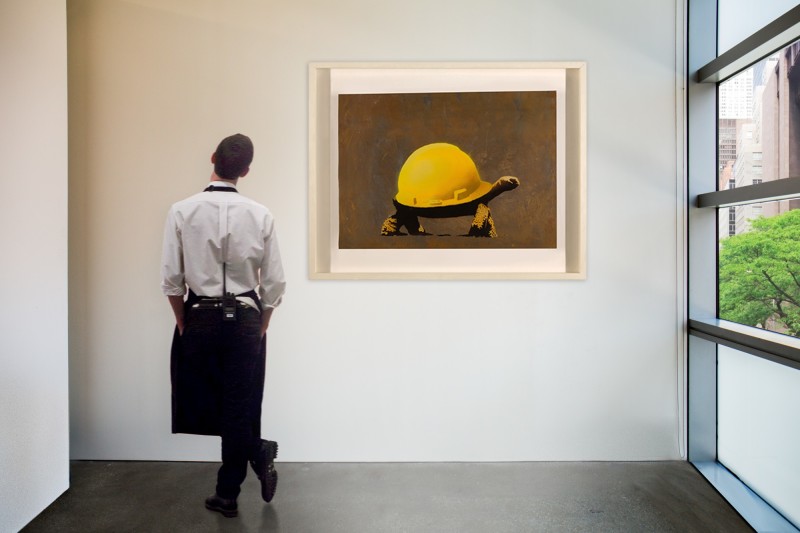
Banksy has followed in the footsteps of the 1980s New York street artists Jean-Michel Basquiat and Keith Haring. Both proteges of Andy Warhol, whose embrace of high and pop art, the beautiful and the mundane, set the stage for today’s street art. Warhol himself responded to the graffiti craze with a series of abstract paintings on metal, which he made by covering the canvases with copper, then urinating on them to oxidise the pigment and produce mineral blues and greens. A subservient and rebellious retaliation to Jackson Pollock. In a similar vein, Banksy utilises the materiality of the metal background to bring the outside world into the realm of high art, in turn subverting the art world from within.

